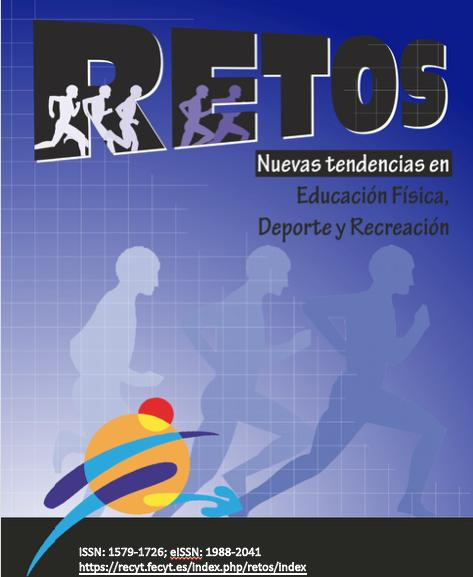Physical Education in the inclusion of immigrant students in Ecuador
DOI:
https://doi.org/10.47197/retos.v67.114727Keywords:
Physical and sports activities, Cultural diversity, inclusion, Immigration, Human mobilityAbstract
Introduction: Physical Education allows for the inclusion of immigrant students through physical and sports activities that promote play, communication, respect, and appreciation for cultural diversity.
Objective: To determine the conditions of inclusion that characterize Physical Education for immigrant students in Ecuador.
Methodology: A quantitative method with a descriptive cross-sectional method is used and the questionnaire technique was applied through a 20-item survey valued using a Likert scale. The sample consisted of 384 Physical Education teachers nationwide.
Results: There is a positive attitude toward the inclusion of immigrant students in schools, both public and private; this attitude is not always reflected in effective inclusive practices. In the area of Physical Education, a duality is observed: while participation and teamwork are promoted, there are deficiencies in institutional support, collaboration between professionals, and the integration of diversity into the curriculum.
Discussion: Various studies agree with the current study on the need for training physical education teachers in skills to address the inclusion of immigrant students. They also highlight its value in respecting diversity. The need for public policies for the inclusion of immigrant students and flexibility in educational strategies is also recognized.
Conclusions: There is a great need for a comprehensive approach that combines clear policies, specialized teacher training, and a culture of respect for diversity to ensure the effective inclusion of immigrant students in physical education in Ecuador.
References
Almerida-Pereira, A., De Sousa-Celestino, T., & Jales-Ribeiro, E. (2023). Determinantes para una Educa-ción Física Inclusiva: percepción de un grupo de docentes especialistas en inclusión. Retos, 47, 282–291. doi:https://doi.org/10.47197/retos.v47.94755
Ankur, J., Saket, K., Satish, C., & DK, P. (2015). Escala de Likert: explorada y explicada. Revista Actual de Ciencia y Tecnología Aplicadas, 7(4), 396-403. doi:https://10.9734/BJAST/2015/14975
Carter-Thuillier, B., Gallardo-Fuentes, F., Bossay-Salinas, C., Carter-Beltran, J., Parra-Saldía, M., Leiva-Pinto, E., & Pérez de Arce, M. (2022). Valores asociados a la práctica físico-deportiva durante la infancia y la adolescencia: unestudio multicaso con alumnado inmigrante y chileno. Retos, 45, 96-103. doi:https://doi.org/10.47197/retos.v45i0.92235
Cohen, N., & Gómez, G. (2019). Metodología de la investigación, ¿para qué?: La producción de los datos y los diseños. Buenos Aires: TESEO. doi:doi.org/10.2307/j.ctvxcrxxz.1
(2008). Constitución de la República del Ecuador. Asamblea Nacional. Quito: Asamblea Nacional. Obte-nido de https://www.oas.org/juridico/pdfs/mesicic4_ecu_const.pdf
Elías, A., Granada, I., Näslund-Hadley, E., Ortiz, P., Romero, J., & Dávalos, A. (2022). Migración y educa-ción: desafíos y oportunidades. Washington, D.C.: Banco Interamericano de Desarrollo. doi:http://dx.doi.org/10.18235/0004468
Figueroa, T., Pineda, R., & Suárez-Meza, N. (2024). El rol del docente en la educación inclusiva con po-blación migrante. Dialéctica, 1(23), 517-540. doi:https://doi.org/10.56219/dialctica.v1i23.3070
Instituto Nacional de Estadística y Censos. (2023). Censo Ecuador. Quito: INEC. Obtenido de https://www.censoecuador.gob.ec/
(2011). Ley Orgánica de Educación Intercultural. Quito: Asamblea Nacional. Obtenido de https://gobiernoabierto.quito.gob.ec/Archivos/Transparencia/2021/04abril/A2/ANEXOS/PROCU_LOEI.pdf
(2021). Ley Orgánica de Protección de Datos Personales. Quito: Asamblea Nacional, Registro Oficial Suplemento 459. Obtenido de https://www.finanzaspopulares.gob.ec/wp-content/uploads/2021/07/ley_organica_de_proteccion_de_datos_personales.pdf
Médor, P., Moreno-Doña, A., & Rivera-García, E. (2022). Migración, Cultura y Educación Física: las voces de padres y madres. Retos, 45, 184-194. doi:https://doi.org/10.47197/retos.v45i0.90850
Mosteiro-García, M., & Porto-Castro, A. (2017). La investigación en educación. En L. Mororó, M. Couto, & R. Assis, Notas teórico-metodológicas de pesquisas em educação: concepções e trajetórias (págs. 13-70). Ilhéus: Editus.
Mundet-Bolós, A., Simó-Solsona, M., Crespo-Forte, R., & Batalla-Flores, A. L.-A. (2024). Actividad física y resiliencia. Una práctica en Europa para la inclusión social. Retos, 53, 17–27. doi:https://doi.org/10.47197/retos.v53.100245
Organización de las Naciones Unidas. (2020). Informe Migratorio Sudamericano. Tendencias Migrato-rias en América del Sur. Buenos Aires: ONU Migración. Obtenido de https://lac.iom.int/sites/g/files/tmzbdl626/files/documents/Tendencias_Migratorias_en_America_del_Sur_Marzo_Final.pdf
Panizo-Toapanta, A. (2023). Inclusión educativa en el marco de la movilidad humana que atraviesa a Ecuador. Quito: [Repositorio de la Universidad Andina Simón Bolívar, Tesis de maestría]. Obte-nido de https://repositorio.uasb.edu.ec/bitstream/10644/9302/1/T4068-MIE-Panizo-Inclusion.pdf
Puente-Maxera, F., Martínez-De Ojeda, D., Méndez-Giménez, A., Valverde, J., & Jiménez-Martínez, I. (2023). Efectos de una temporada de Educación Deportiva sobre un Deporte Alternativo en el Clima Escolar, la Inteligencia Emocional y la Competencia Percibida de Estudiantes de Educa-ción Primaria pertencientes a un Contexto Multicultural. Retos, 50, 1019–1028. doi:https://doi.org/10.47197/retos.v50.99063
Ramos-Galarza, C. (2020). Los alcancez de una investigación. CienciAmérica, 9(3), 1-6. doi:http://10.33210/ca.v9i3.336.
Sánchez-Mojica, J. (2021). Migración infantil e inclusión educativa: Un tópico en deuda para el desarro-llo de enfoques y políticas integrales de atención en Latinoamérica. Revista Electrónica Educa-re, 25(2), 262-284. doi:http://dx.doi.org/10.15359/ree.25-2.15
UNESCO. (2023). Inclusión educativa de personas en situación de movilidad humana. Educación, Orga-nización de las Naciones Unidas para la Educación, la Ciencia y la Cultura, Oficina Regional de Educación para América Latina y el Caribe, París. Obtenido de https://articles.unesco.org/sites/default/files/medias/fichiers/2023/06/Nota%20T%C3%A9cni-ca%20foro%20Educaci%C3%B3n%20m%C3%A1s%20all%C3%A1%20de%20las%20fronteras%202023.pdf
Downloads
Published
How to Cite
Issue
Section
License
Copyright (c) 2025 Cruz Abigail Culque Núñez, Diana Marcela Muñoz Espinoza, Diana Sugey Quinga Gavilanes, Cynthia Elizabeth Mendoza Avila

This work is licensed under a Creative Commons Attribution-NonCommercial-NoDerivatives 4.0 International License.
Authors who publish with this journal agree to the following terms:
- Authors retain copyright and ensure the magazine the right to be the first publication of the work as licensed under a Creative Commons Attribution License that allows others to share the work with an acknowledgment of authorship of the work and the initial publication in this magazine.
- Authors can establish separate additional agreements for non-exclusive distribution of the version of the work published in the journal (eg, to an institutional repository or publish it in a book), with an acknowledgment of its initial publication in this journal.
- Is allowed and authors are encouraged to disseminate their work electronically (eg, in institutional repositories or on their own website) prior to and during the submission process, as it can lead to productive exchanges, as well as to a subpoena more Early and more of published work (See The Effect of Open Access) (in English).
This journal provides immediate open access to its content (BOAI, http://legacy.earlham.edu/~peters/fos/boaifaq.htm#openaccess) on the principle that making research freely available to the public supports a greater global exchange of knowledge. The authors may download the papers from the journal website, or will be provided with the PDF version of the article via e-mail.


